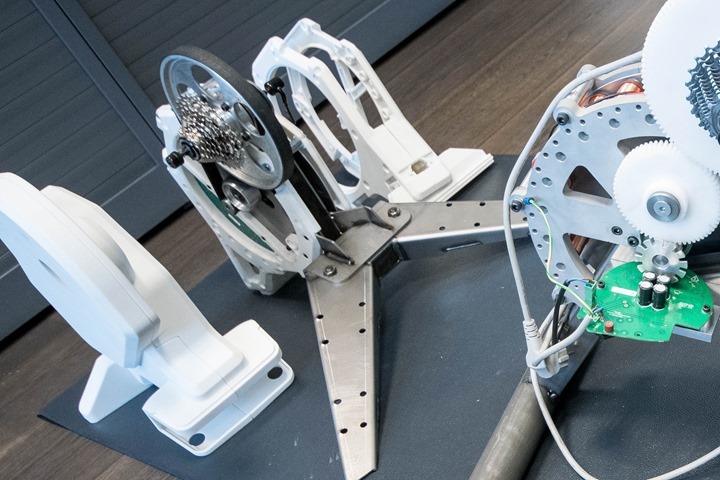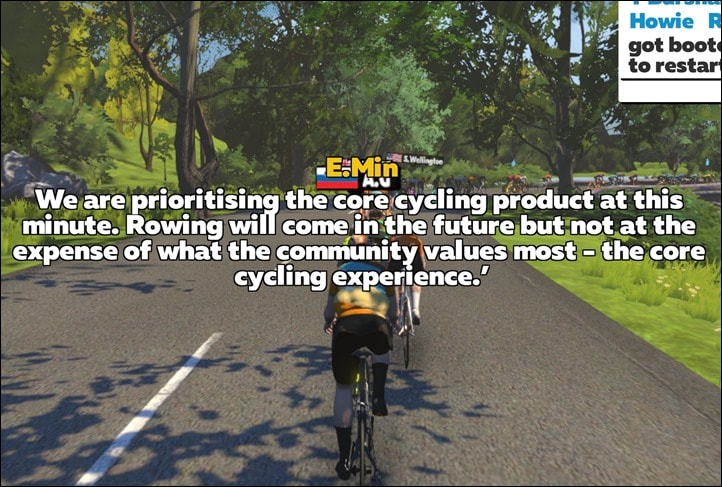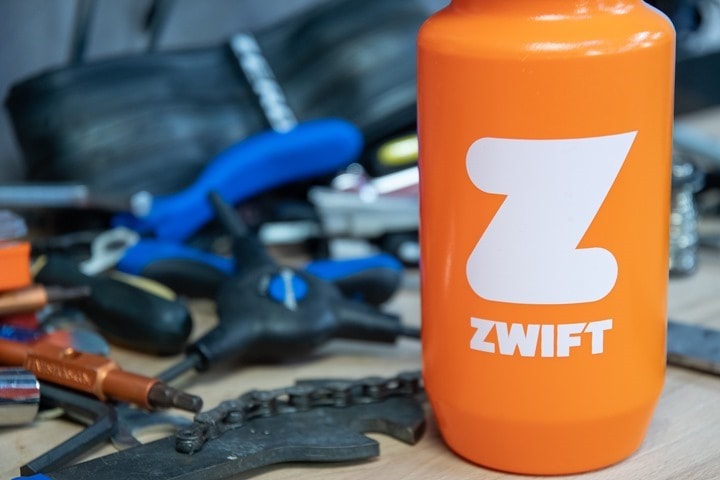Last week Zwift posted a slate of new job positions, notably around supply chain management. Included within that, the company listed that they’ll not only be making three specific models, but that they’ve also selected their hardware production partners already.
At a high level, the position postings themselves would be expected. Zwift has been more open in the last few months about their hardware ambitions, in numerous statements from the CEO and PR teams. They’ve openly discussed their plans to bring hardware into a market currently occupied entirely by their partners.
All of these positions are part of Zwift’s hardware division, which is called FitTech, and appears to be largely based out of London (since that’s where all of the FitTech engineering/test/etc positions are showing from). This matches with the first round of positions about 16 months ago.
However, most of the more interesting tidbits here come from the Supply Chain positions, which are able to work mostly anywhere (according to the descriptions).
Props to Tariq Ali of SmartBikeTrainers.com for his tweet catching a couple of key words in one of the listings for the Director of Global Supply Chain Planning, specifically, this sentence:
“we are now expanding and are in the process of launching three at-home fitness products, that Zwift will manufacture and deliver directly to customers all over the world.”
And more specifically, the part where it says “three at-home fitness products”, as previously they haven’t really disclosed just how many products they’re working on. Of course, Zwift already makes one physical hardware product – the Zwift Running Pod, though, I’m not sure they’re actually even making that anymore, as it’s been sold out on their site for a while. That’s the pod they bought from Milestone a few years back.
Manufacturing Partners Selected:

(Above: The insides of a prototype Tacx Flux S smart trainer, prior to release)
Before we talk about the Zwift hardware threesome, there’s also a slightly different listing which details another element that might give clues to who their partners are. Inside the posting it says:
“You will work closely with our manufacturing partners in China to ensure production can run efficiently, and all component parts are delivered to them on time.”
While most job listings might allude to a region for partners (such as Asia), this is actually direct in two manners. First, it states that they’ve already selected partners in China for production, and two, that they’re going to produce these in China, specifically.
At first glance you might shrug this off. But a bit more understanding of the sports tech landscape makes this interesting:
A) It means they’ve gotten far enough down the road to choose a manufacturing facility
B) This means they aren’t planning on acquiring an existing player in the market (who almost exclusively produce outside of China)
C) It means they aren’t going to leverage existing 3rd party manufacturing powerhouses like Giant, which makes their stuff in Taiwan
D) It calls into question leveraging Specialized facilities based on that investment round, as some had speculated, which are largely in Taiwan, Cambodia, and elsewhere
E) It puts Magene as a viable manufacturing partner on the table
F) It uses the plural of partners, which might imply more than one manufacturing facility (potentially for different products)
Around this point in the post, many of you are like “Who is Magene, and how’d they end up in this post?!?”. Magene is a Chinese-based sports tech company that’s made trainers for a number of years, and has more recently dabbled in power meters. I reviewed one of their trainers a few years back, and found them actually surprisingly accurate and well done for a company that at the time didn’t have much experience/history. In many (most?) ways, they duplicated the Wahoo designs of the time, though recently they’ve gone their own route a bit on designs. Though their most recent T300 direct drive trainer seems a lot more variable, and drifts considerably, based on the testing that GPLAMA has done.
Beyond Magene, most other trainer manufacturing partnerships within Asia tend to fall to Thailand, Vietnam, and Taiwan. Though interestingly, Magene actually lists Wahoo Fitness as an investor and their own Alibaba page lists them as Wahoo’s supplier – so whether or not that would preclude a partnership with Zwift is unclear (since helping make trainers for Zwift would obviously not be in Wahoo’s competitive interest). Though, Magene (which goes by half a dozen corporate identities in China) does have OEM manufacturing partnerships for a few different product categories including rocker plates, bike lights, smart trainers, power meters, and more.
Obviously, manufacturing goods in China isn’t news per se, but the Magene angle gives one pause – as they’d have experience in this sector already. And as much as bean counters who haven’t built trainers and smart bikes want to believe manufacturing is interchangeable, the reality is that having an experienced partner in this sector will save many months of ramp-up struggles.
Three Fitness Products:
But let’s back up a second to the “three at-home fitness products” part of this job description. That’s obviously the most important part of today’s post. In fact, it’s so important that Zwift has realized it was a poor strategy to include that in the job posting itself. Since Tariq’s initial tweet, that wording has since been changed to remove those words. However, you can’t remove anything from the internet – it’s still everywhere:
Assuming this isn’t just three new footpods, which obviously, it isn’t – then the question is to what level do these three new products rise to?
One could assume a smart bike, a trainer, and perhaps a KICKR CLIMB like accessory with steering built-in. Or, it could be three ‘trainers’/’bikes’, such as a low-end trainer, a mid to high range trainer, and a smart bike. Or, it could be steering products of their own, not requiring dependence on companies like Elite and their Sterzo Smart.
Now Zwift’s CEO Eric Min has already confirmed they’re building a smart bike, so that takes one of them off the listing. Here’s that exchange from this past fall:
Bloomberg: “So does that mean there’s going to be a smart bike, a Zwift branded smart bike?”
Eric Min: “That’s right, we’ve been telling our partners for many years now that this is really the future of growing this entire category. And we’ll continue to work with our partners, and in the current environment our partners cannot make enough hardware.” [He goes goes on to note that the shortages have impacted many different fitness companies beyond Zwift.]
Bloomberg: “So when can we see that Zwift branded smart bike?”
Eric Min: “Well I wish…yesterday. We’re working as fast as we can, but these things do take time. We’re certainly not going to come out with a product that is just a, you know, just another piece of product. I think we have an opportunity to really innovate. And really further enhance the experience that we promised ourselves to deliver on.”
And while a so-called Zwift Bike makes a ton of sense (and what I’d focus on as well), it won’t move the needle in subs. That’s because Zwift won’t be able to make meaningful quantities for years. That manufacturing capacity doesn’t exist to the degree Zwift wants it to. Even if we combine all of the smart bikes made monthly by Wahoo, Tacx, Wattbike, and Elite, that’s not even a drop in the bucket. Low single-digit thousands (units), give or take, in total.
Instead, Zwift needs to make tens of thousands of units to have even a start at meaningful impact on their growth numbers – and it will take years to reach that for smart bikes, due to the complexity of what they’re designing. So, smart trainers it is.
The only question is: What’s it gonna cost, and what features will it have? My bet is simple:
Good: Wheel-on smart trainer at ~$399 price point (or under)
Better: Direct drive smart trainer at $999
Best: Full smart bike in the $2,500-$3,000
And all of those would have some initial Zwift subscription probably baked in to entice people further, over their competitors. Ideally they’d find a way to get a $1,800-$2,400 smart bike, to roughly match Peloton’s two-tier pricing, but I think that’ll be challenging at launch.
Or, they could do something completely off the rails and build a rower or treadmill. But neither is in line with Zwift’s very clear stance in recent months that they’re focusing on cycling, and just cycling. In fact just last weekend they had to walk back a tweet where they implied rowing was about to be added to the game. In reality, according to Zwift’s CEO, any focus on rowing has been tabled – likely because they and their investors have realized there’s no meaningful amount of new subscriptions to be made there from a growth standpoint, relative to cycling. And the same would largely apply to running, since it doesn’t appear treadmill availability is really the limiter on Zwift’s running growth.

In any case, as I’ve said before – I certainly wouldn’t hold back any purchases waiting for Zwift’s hardware. There’s simply no way hardware availability is coming anytime soon. My best guesstimate is that they could potentially announce a product portfolio at the end of summer, around the Eurobike timeframe, but that it probably won’t be available until at earliest the end of the year, or likely not till 2022. There are exceptions to that, such as by purchasing another brand – but that also seems less and less likely now. The more complexity Zwift tries to chew off, the longer the timeframes are, because ultimately, Eric Min said it best himself as part of that November interview:
“I can tell you we’ve been working on it for some time now, and hardware is as they say – hard.”
With that – thanks for reading!







0 Commentaires